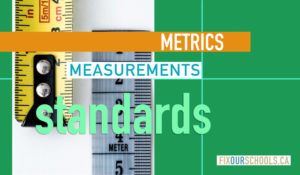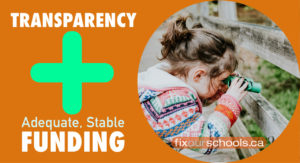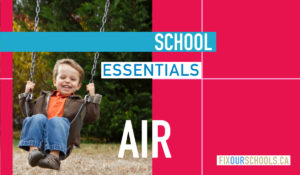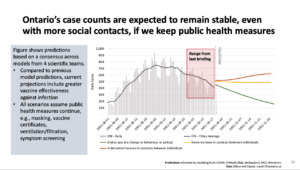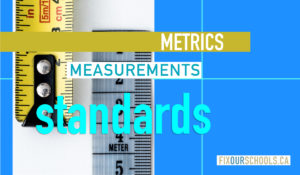Ontario’s Finance Minister Bethlenfalvy has until March 31st to table a new provincial budget. Accordingly, the Ford government has been running its pre-budget consultation process in recent weeks. However, the approach being used to this pre-budget consultation is different to that of previous governments in this province. The former Liberal government, for instance, held town hall-style consultations that were open to members of the public and to journalists; and ensured that all submissions and presentations were delivered to the Standing Committee on Finance and Economic Affairs so that all input was on the public record.
In stark contrast, the Ford government’s approach to this consultation seems to lack transparency, and does not include members of the public. According to NDP Finance critic Catherine Fife, “the PC members are promoting these consultations as public consultations, but they are not.” Instead, Michael Parsa, parliamentary assistant to the Finance Minister, has been hosting invite-only “conversations with community members” attended by cabinet ministers, local PC MPPs, CEO’s and finance ministry officials. In lieu of a formal public record, Parsa has been sharing screenshots on social media.
On behalf of @PBethlenfalvy and the Ontario Ministry of Finance, we had another great virtual pre-budget 2022 consultation with @BobBaileyPC. Thank you to all those who joined and provided us with valuable feedback. pic.twitter.com/Jf1h8uNndV
— Michael Parsa (@MichaelParsa) January 21, 2022
Apparently, “copious notes” are also taken from the Zoom presentations, but these are not shared as a matter of public record, and all members of the legislature do not appear to receive these notes or have access to pre-budget submissions from all stakeholders. Green Party Leader Mike Schreiner wants all pre-budget submissions to be made available to every member of the legislature, stating that, “We need transparency and collaboration to ensure this year’s budget will adequately address the multiple crises facing all Ontarians”.
Fix Our Schools agrees wholeheartedly with the concerns about the lack of transparency in this pre-budget consultation by the Ford government. Indeed, we believe that an effective and efficient provincial government would embrace: accountability and responsibility; effective and timely communication; authentic stakeholder engagement; and transparency.
As top priorities, Fix Our Schools’ pre-budget submission called on the provincial government to:
- Develop and implement standards for school infrastructure, including portables and schoolyards
- Collect data and measurements that demonstrate publicly that these standards are being met
- Provide adequate and stable funding for these standards to be met and for the required metrics to be collected and shared
As we looked at the input from other education stakeholders, we found that many echoed our calls to action. For instance, the Ontario Catholic Teachers’ Association’s (OECTA) pre-budget submission noted the $16.8-B repair backlog that continues to grow each year in Ontario’s publicly funded schools and called upon the provincial government to “provide immediate, stable, and sufficient annual funding for infrastructure and repairs“. Noting how the COVID pandemic has revealed the criticality of indoor air quality and ventilation to public health, OECTA also called upon the Province to, “act proactively and make the necessary investments to ensure that all schools have ventilation systems that meet the health and safety standards set by the American Society of Heating, Refrigerating, and Air-Conditioning Engineers (ASHRAE), effectively reducing the airborne spread of COVID-19. To ensure that this process is transparent, the government must also institute a provincial standard for air quality measurements in schools, with publicly available metrics to indicate whether standards are being met.”
Similarly, the Ontario Secondary School Teachers’ Federation (OSSTF) emphasized in their pre-budget submission that students and education workers need safer, healthier, and accessible schools. OSSTF highlighted the $16.8 billion repair backlog in Ontario’s schools and stated that, “the government must address the repair backlog with additional funding by increasing the out-of-date benchmarks for pupil accommodation. The School Operations Grant must be funded to a level that will maintain the good repair of buildings so that Ontario’s backlog stops growing. As well, further funding is necessary to enhance the accessibility of schools to meet the 2025 deadline of the Ontarians with Disabilities Act.”
The Elementary Teachers Federation of Ontario’s (ETFO) pre-budget submission also included asks on improving school infrastructure, noting how the pandemic has exacerbated concerns and how the provincial government has failed to provide appropriate funding to meet the needs of all students. Noting the massive school repair backlog in Ontario, ETFO’s pre-budget submission stated that “the pandemic has highlighted the poor physical condition of many public schools and the impact physical infrastructure can have on the learning conditions for students and the working conditions for teachers and education workers.” ETFO’s submission also emphasized the need for additional funding to improve ventilation and air quality in schools, the importance of ASHRAE guidelines for minimum ventilation standards, and the need for additional funding to ensure that data is collected on indoor air quality in classrooms and compared against a standard.
The pre-budget submission by the Ontario School Boards’ Association (OPSBA) stated clearly that “school boards require strong, predictable and equitable education funding in order to set the conditions that promote and sustain improved student achievement and well-being”, and included a designated section on capital and facilities funding. OPSBA suggested that provincial funding for heating, ventilation, and air condition (HVAC) systems was even more critical during the COVID pandemic and asked for more transparency, and increased capital funding benchmarks.
Clearly, other education stakeholders also recognize the need for:
- adequate, stable provincial funding for schools and education
- standards and data to ensure those standards are being met
- a focus on indoor air quality and ventilation in schools
Sadly, with regard to standards for indoor air quality, we noted that the scant “standards” the Ford government had put in place around HEPA filters has been diluted so that the Ministry’s expectation is that HEPA Filters would only be needed in kindergarten classrooms and occupied learning spaces without mechanical ventilation.
Looks like the MOE quietly updated their website yesterday… pic.twitter.com/v5bE4ZSBNc
— Mike Perri (@itsmikeperri) January 28, 2022
This weak “standard” for HEPA filter placement in learning spaces would explain why we have heard from so many across the province without a HEPA filter in their classroom:
No HEPA filter nor functioning window in an #Ontario classroom. https://t.co/c9bynyvHMM
— Fix Our Schools (@Fix_Our_Schools) January 29, 2022
Our schools at Six Nations have been asking for them for at least over a year now. We are told that the HVAC systems are sufficient.
GEDSB said they received over 400 HEPA units. I imagine they have a LOT more than 400 classrooms across all their elementary & secondary schools. https://t.co/rI1F5FC87S
— Mr. Restoule General (@mrrgteacher) January 27, 2022
And, quite frankly, without any measurement and data collection to understand the actual quality of the indoor air in classrooms, standards are not particularly effective anyways.
Standards & measurements are needed in #Ontario schools. https://t.co/BGrO5CkaCj
— Fix Our Schools (@Fix_Our_Schools) January 31, 2022
We need a provincial government that is committed to standards, data collection to compare against those standards, and adequate, stable provincial funding for Ontario schools. Currently, we do not have such a government. The next provincial election is approaching quickly and with it, comes an opportunity to demand more for Ontario’s 2-million children who spend their days at school.

